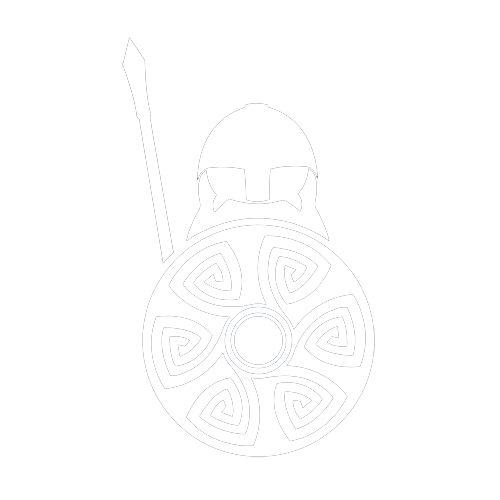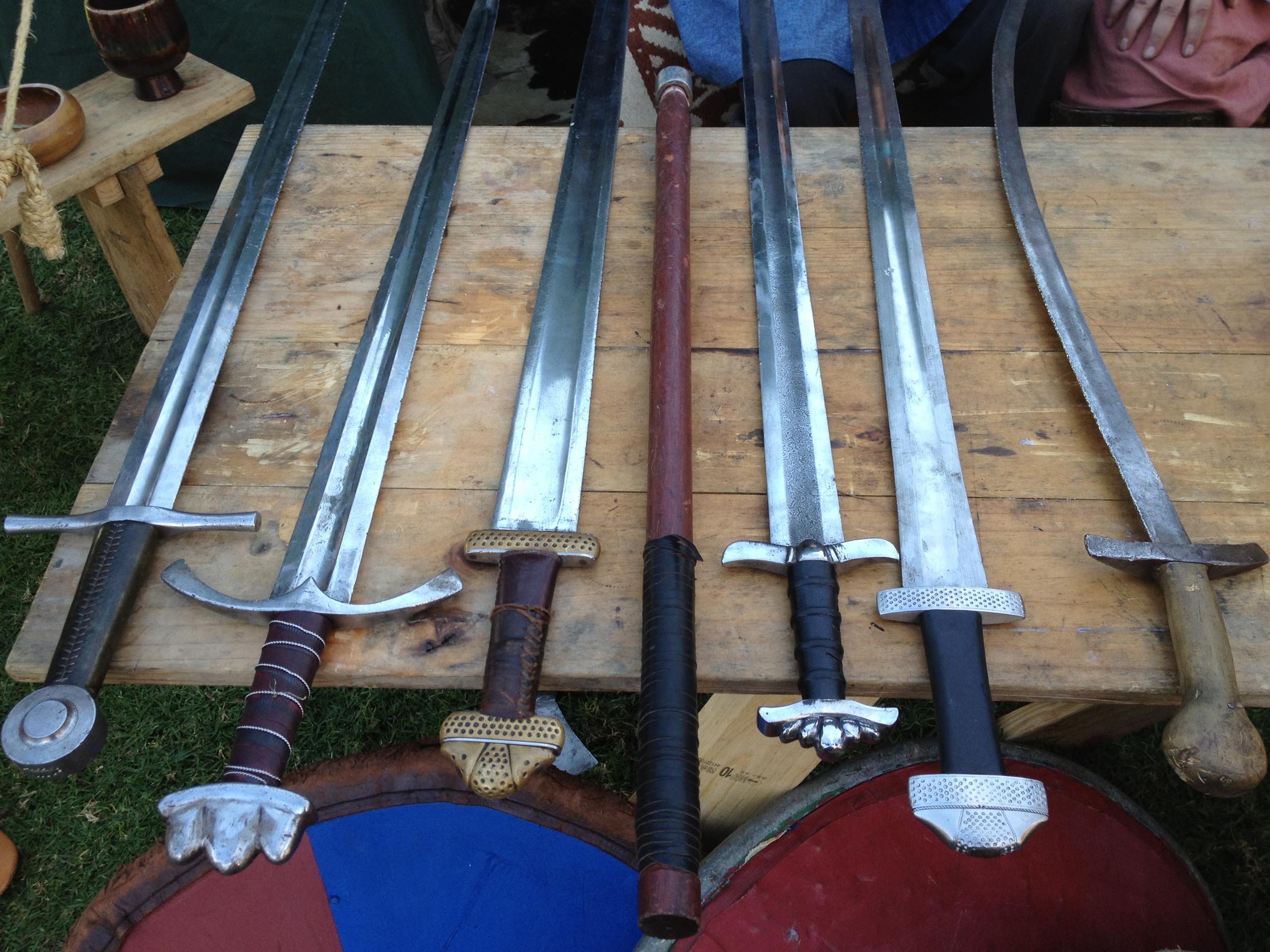The Medieval Sword
Swords have been an iconic weapon since ancient times. In the medieval period, the sword became the weapon of choice for knights and warriors, and its evolution is a testament to the advancements in technology and craftsmanship during that time. Take a closer look at the history of medieval swords and explore the different types that emerged.
History of Medieval Swords
The medieval period saw the emergence of the sword as a crucial weapon in warfare. Swords were used for both cutting and thrusting and were favored by knights and foot soldiers alike. The first medieval swords were made from iron, but over time, advancements in metallurgy led to the use of steel, making swords stronger and more durable.
The evolution of swords during the medieval period was marked by several significant developments. One of the most important was the introduction of the crossguard, which protected the hand of the wielder and enabled them to use the sword for thrusting. Other advancements included changes in the shape of the blade, the use of fuller grooves to make the sword lighter, and the development of more sophisticated hilt designs.
Types of Medieval Swords
Over the centuries, a variety of swords emerged, each with its own unique features and design. Some of the most notable types of medieval swords include:
Longsword
The medieval longsword, also known as a hand-and-a-half sword, is a two-handed sword that was popular in Europe between the 12th and 15th centuries. These swords were made to be versatile, effective, and lethal in battle, and were designed to be used in close combat situations.
The design of the medieval longsword was influenced by the need for a weapon that could be used in a variety of different fighting styles. This sword was used for thrusting, cutting, and slicing, and could be used against opponents wearing armour. The sword was also balanced in a way that allowed for quick and nimble movements, making it a formidable weapon in the hands of a skilled fighter.
Medieval longswords were typically around four feet in length, with a blade that was about 2-3 feet long. The blade was wide and double-edged, with a pointed tip that could be used for thrusting. The hilt of the sword was designed to be held with two hands, but could also be used with one hand if necessary. The pommel, or the knob at the end of the hilt, was often used as a counterweight to help balance the sword.
Knights and soldiers were expected to be skilled with the longsword, and its use was often considered an essential part of their training. The sword was also a sign of wealth and status, as only the most elite warriors could afford to own and maintain such a powerful weapon. The medieval longsword was also an important part of medieval culture, with many legends and tales featuring the weapon, like the story of King Arthur and the Knights of the Round Table, for example.
Broadsword
The medieval broadsword first appeared in Europe in the 12th century and quickly became a popular weapon among knights and warriors. Unlike earlier swords, which were designed primarily for thrusting, the broadsword was a cutting weapon, with a wide, flat blade that was ideal for delivering powerful slashes and cuts.
The design of the medieval broadsword varied depending on the region and time period, but mostly featured a straight, double-edged blade that was approximately 30 to 40 inches long. The blade was typically made of high-quality steel and was sharpened to a razor edge, allowing it to slice through armour and bone with ease.
In addition to its cutting power, the medieval broadsword was also a symbol of status and wealth. Only the wealthiest and most powerful knights could afford to own a sword of this calibre, and owning a well-crafted broadsword was a sign of both martial prowess and social standing.
The design of the medieval broadsword was a marvel of both form and function. The blade was designed to be as light and nimble as possible, while still retaining its cutting power. This was achieved through a combination of a thin, tapered blade and a strong, durable hilt. The hilt of the sword was typically made of wood, bone, or ivory and was designed to provide a comfortable and secure grip for the wielder. The cross guard, which protected the wielder's hand from the opponent's blade, was typically made of steel and featured ornate designs and engravings.
The pommel at the end of the sword's hilt, was also an important element of the sword's design. In addition to providing balance and stability to the sword, the pommel was often decorated with precious metals or stones, making it a beautiful and valuable object in its own right.
Falchion
The falchion sword originated in the early medieval period and was popular throughout Europe during the 13th and 14th centuries. It was a weapon that was designed for cutting, and its blade was usually curved or hooked at the end. The falchion sword was often used by infantry soldiers, as it was a lighter and more manoeuvrable weapon than a longsword. It was also favoured by knights who needed a weapon that could deliver powerful blows.
The medieval falchion sword had a single-edged blade that was sharpened on one side and could be up to 2 feet long. The blade was curved, with a sharp point at the end, and was designed for cutting rather than thrusting. The hilt of the sword was usually made of wood or bone and was curved to provide a better grip. The crossguard was often shaped like a letter "S" and was used to protect the hand from sliding onto the blade during combat.
The falchion sword had several advantages over other weapons of the time. Its curved blade made it ideal for delivering powerful cutting blows that could cleave through armor and bone. Its design also made it a more manoeuvrable weapon than a longsword, which made it easier to use in close combat. Additionally, its single-edged blade allowed for a more efficient use of force, which made it easier to deliver powerful blows with less effort.
The medieval falchion sword was a popular weapon in battles and duels, where it was often used by infantry soldiers and knights. It was particularly effective against heavily armored opponents, as its curved blade could deliver powerful blows that could penetrate even the thickest armor. The falchion sword was also used in duels, where its unique design made it a formidable weapon.
Arming sword
The medieval arming sword emerged in the 12th century as the successor to the Viking sword. It was designed to be a lighter and more versatile weapon that could be used with one hand or in conjunction with a shield. The arming sword was typically between 30 and 40 inches long and had a blade that was usually around 2 inches wide. The blade was tapered to a sharp point, allowing for thrusting attacks, while the edge was sharpened for slashing attacks. The arming sword was made from high-quality steel and was designed to be both sturdy and flexible.
The medieval arming sword was a versatile weapon that could be used in a variety of ways on the battlefield. It was commonly used in conjunction with a shield, which provided additional protection to the wielder. The arming sword was used for both thrusting and slashing attacks and was particularly effective against opponents wearing armor. The sword was also used in tournaments and was a symbol of chivalry and knighthood.
The design of the medieval arming sword was carefully crafted to be both effective and elegant. The blade was made from high-quality steel and was typically straight and double-edged. The hilt was designed to be comfortable to hold and included a cross guard, pommel, and grip. The pommel was often shaped like a round ball or flattened disc and provided balance to the sword. The grip was usually made from wood or bone and was covered in leather or cord for additional grip. The cross guard protected the hand from sliding onto the blade during combat.
Scimitar
The medieval scimitar sword is a legendary weapon that has a rich history and a unique design. It is a curved sword with a sharp edge that was popular in the Middle East, Central Asia, and North Africa during the medieval era. It was used as a weapon of war by warriors, knights, and soldiers, and was also a symbol of power and prestige.
During the medieval period, the scimitar sword became one of the most popular weapons in the Islamic world. It was used by soldiers, knights, and nobles alike, and was often decorated with intricate designs and inscriptions. In addition to its use in battle, the scimitar sword with a hook also played an important role in Islamic culture. It was often given as a gift to honor a notable person or to mark a special occasion.
The scimitar sword has several a distinctive feature that set it apart from other weapons. The being its curved blade, which is designed to deliver powerful and precise strikes. The curve of the blade allows the wielder to use the full force of their arm and body when striking, making it a devastating weapon in the right hands.
Rapier
The rapier sword is a type of slender, sharply-pointed sword that originated in 16th-century Spain and Italy. It is characterized by its long, narrow blade, which is designed to be used primarily for thrusting attacks rather than slashing. The hilt of the rapier sword is typically quite elaborate, with a large, protective guard that extends down the blade to protect the user's hand, and a long grip that allows for two-handed use.
The rapier sword first appeared in Europe in the late 15th century, but it was in 16th-century Spain and Italy where it truly came into its own. The use of the rapier became associated with the concept of "civilized" dueling, as opposed to the more brutal, hand-to-hand combat of earlier eras. The rapier's popularity spread throughout Europe in the 17th century, and it continued to be used as a civilian weapon even after it fell out of favour with the military.
The rapier sword is notable for its long, slender blade, which is typically around 3 feet in length. The blade is usually double-edged, but it is designed to be used primarily for thrusting attacks, rather than for cutting. The hilt of the rapier sword is also quite distinctive, with a large, protective guard that is often shaped like a cup or a shell. The grip of the sword is long and allows for two-handed use, which gives the wielder greater control and precision.
The rapier sword was primarily used for duelling, but it also saw use in military conflicts. In battle, the rapier was often used as a secondary weapon by officers and other high-ranking soldiers, who could use it for quick, precise strikes against their opponents. In civilian life, the rapier was used for self-defence and as a status symbol, with the most ornate and beautifully-crafted swords being owned by the wealthiest members of society.
The medieval sword was a powerful weapon that played a crucial role in warfare. The evolution of swords during the medieval period was marked by significant advancements in technology and craftsmanship, and the different types of swords that emerged are a testament to the diversity and creativity of medieval swordsmiths. Today, medieval swords continue to capture the imagination of people all over the world, and their legacy lives on in museums, movies, and popular culture.








